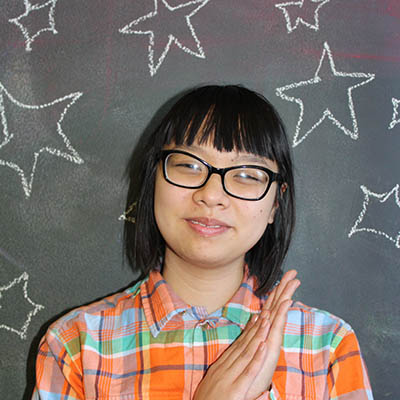Augmented Reality Visualizations
An experimental design project that explores visualizing data in three dimensions for augmented reality. Visualizations that can be examined and inspected by physically getting closer or understood by walking around them, open up exciting possibilities for how we communicate complex ideas and data that reveals hidden truths.
Students will adapt data visualizations created for 2D and leverage the use of depth to add further understanding, complexity and or scale.
Students will also explore visualizing data through metaphor in a three dimensional space. For example a city-scape visualized on a living room floor where the height of each building represents population growth for different urban areas across the world. Another example might be comparative size, such as holding the smallest frog in the amazon in your hand or placing the world’s tallest tree in your front yard. Both of these have the potential for amazement, delight, a sense of wonder and visceral reactions.
Faculty and Staff Leads
Project Details
2018 Winter
Exploring Augmented Reality Visualizations
Description
An experimental design project that explores visualizing data in three dimensions for augmented reality. Visualizations that can be examined and inspected by physically getting closer or understood by walking around them, open up exciting possibilities for how we communicate complex ideas and data that reveals hidden truths.
Important Questions
- How might we translate our existing ideas about data visualization into augmented reality?
- What new opportunities for communicating data does AR present?
- How does experiencing a data visualization change when we move that visualization into AR?
- What types of stories might benefit from being visualized in AR?
Sample Milestones
- Week 1-2 Domain exploration. We will examine stories that have potential in AR. Students will spend the first two weeks of class learning 3D modeling and prototyping.
- Week 3 Develop a AR prototyping workflow.
- Weeks 4-7 Exploring and inventing paradigms. In short weekly cycles, students will one form to explore and one work, dataset, or story that fits the form. They'll spend the early part of the week analyzing the examples to find the mechanics that convey meaning and to identify opportunities and potential drawbacks presented by doing that kind of story in AR. The latter part of the week, they'll use tools to create AR prototypes of experiences that take advantage of those opportunities.
- Week 8-10 Students will aggregate their work into a proposed best practice guide that covers both general practices for AR data visualization and specific solutions to the problem types they explored.
Outcome
Students will increase their understanding of what makes a visualization "work" (both flat and 3D). They will work iteratively and gain fluency with AR prototyping workflows. During the first portion of the class, they'll dedicate each week to understanding and iterating on a certain type of visualization or property (ie "Scale", or "Populations"). As other projects move into their development phases, the group will work to aggregate their research into a proposal for Best Practices for Visualizing Data in AR.
Presentation Slides
Students
2018 Spring
Augmented Reality Visualization Tool
Description
Based on the outcomes of our a Exploring AR Visualizations project in the Winter, this project will take the unique forms of visualizations discovered and develop a tool that makes it easy for storytellers to build and embed augmented reality visualizations in their stories and projects.
Important Questions
- Which visualization forms seem most promising for helping audiences understand or experience data?
- Which visualization forms most lend themselves to a general tool?
- How might we make such a tool that’s easy to use and which promotes more experimentation and discovery about how AR visualization works "in-the-world?"
Sample Milestones
- Decide on data platform
- Decide on visualization platform
- Develop approach to mapping of things I am interested in to data elements
- Select a first order model of the questions that people want to ask
- Develop parser to figure out questions/parameters
- Build out analytics strategy mapped to specific questions
Outcome
Students will learn about the relationship between data, analytics and meaning. Students will also learn how to build out software that implements and communicates design constraints.



